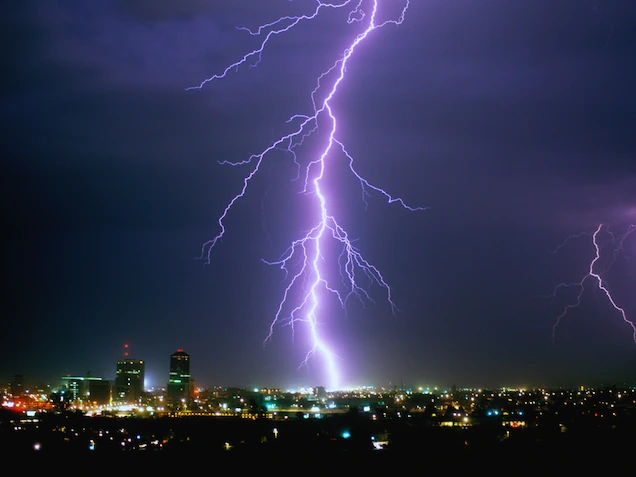By Jonathan Ram, Year 12
In our lifetimes we have all at some point been in thunderstorms, whether big or small, lasting anywhere from just a few minutes to multiple hours. But have you ever stopped to think and wonder, ‘why do lighting bolts zigzag?’
Firstly, why is it important (or not) to know why lighting bolts zigzag? There are over 8 million lightning strikes on the earth’s surface every day and us humans are not particularly resistant to such large surges of voltage going through our bodies. Being struck by lightning can leave permanent scars on your body, and there is a roughly 10% fatality rate. Therefore, it is very important to know how lightning bolts are shaped to predict where they will hit the earth’s surface.
Tall and isolated buildings have an especially high probability of being struck by lightning. For example, the Empire State Building gets struck around 25 times a year, while the CN Tower in Toronto gets struck around 75 times a year.
To start understanding why lightning bolts have a zigzag shape, one must first understand what they are made of. Though the physics behind lightning is surprisingly mysterious, especially for such a common occurrence, lightning bolts are a discharge of electricity at tens or hundreds of millions of volts at around 10-30 thousand amps. To put it in comparison, the average household outlet in Switzerland is 230 volts and around 10 amps. Lightning strikes are very hot and can heat the air around them to 30,000˚C, which causes the air to expand drastically, and therefore create small sonic booms, which are commonly known as thunder.
Lightning forms a zigzag pattern because as the lightning passes through oxygen, it creates singlet-delta metastable oxygen, which is luminous and highly conductive, creating a chain reaction and allowing lightning bolts to be kilometres long. This allows the lightning to famously branch out from a more luminous bolt. It is also the reason why they zig-zag. The concentration of this singlet-delta oxygen is somewhat random, and since electricity always follows the path of least resistance, it has no problem changing course to have a “smoother ride”.
Though the mechanisms behind the zig-zagging are well understood(though complicated), little is truly understood about the formation of lightning itself. It is known that lightning comes from a difference in charge between a cloud and the surface under it, but the formation of this rather specific scenario is not well described by current theories of physics and meteorology.



